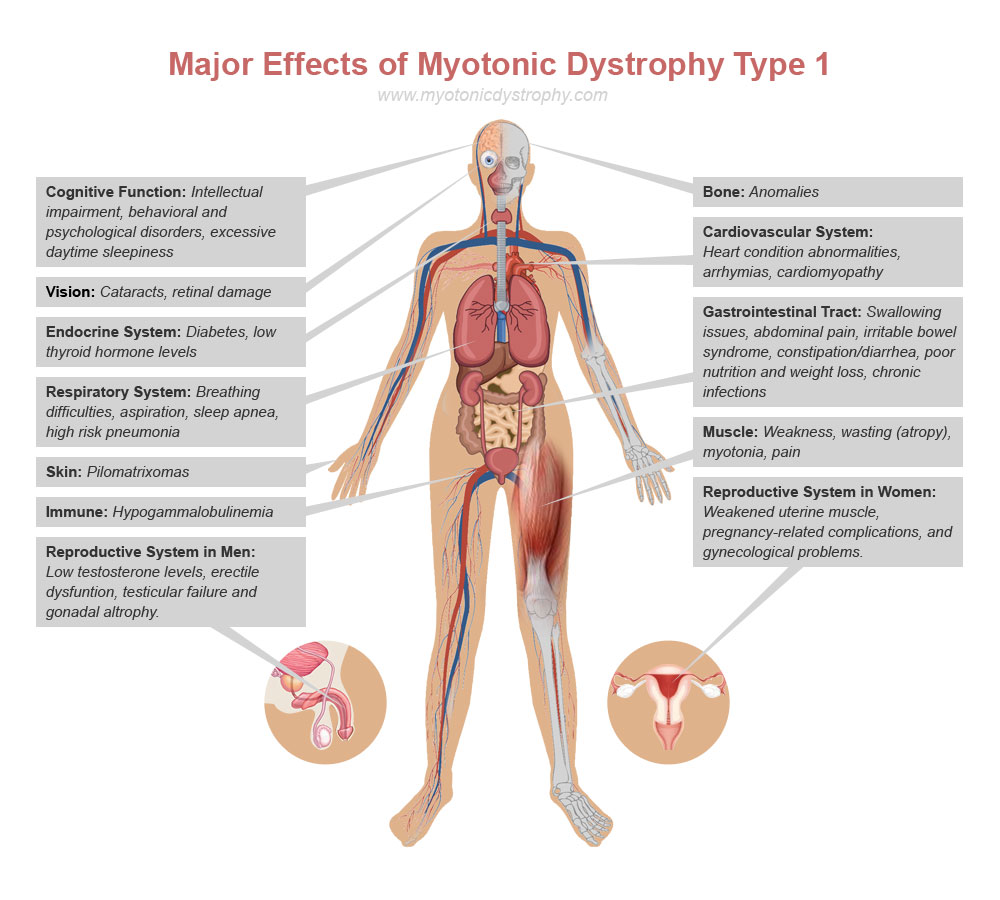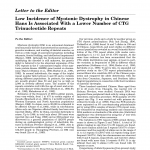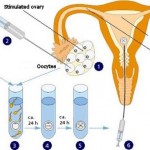
This is a diagram or the major effects of Myotonic Dystrophy on the Human. Click to enlarge
The Blog. You’ve reached this site as you may be the one of nearly one million people affected by Myotonic Dystrophy Worldwide. This site aggregates and publishes all information on Myotonic Dystrophy Myotonic Dystrophy is a disease that is genetically based and inherited from one generation to the next. One out of two children of a person with myotonic dystrophy will most likely have the disease. Unlike most diseases, the symptoms that a person with this disease varies from person to person. Some people are just mildly affected others are severely affected. This makes it hard to tell you exactly how the disease will affect a particular person.
Four treatments that have potential have now surfaced about Myotonic Dystrophy. These are three approved Drugs by FDA and “off label use” may assist some people with DM1. (As always check with your Doctor) . The other is a drug that is not FDA approved in the USA for human use. Three off label uses have showed promise in mice studies but as yet there is no human data… In January of 2017 Ionis Pharmaceuticals stopped the trials of its DMPK-2.5Rx drug as it failed to show promise in the human trials. There are a few drugs that are in development to treat myotonic dystrophy with various approaches such as small molecules but not available now. There have been some studies in mice or human cells of currently approved FDA drugs but no human studies. A few are listed below.
===> Furamidine Study in mice and cells with Erythromycin
====>Colchicine (Colcrys, Mitigare), Fall 2019 a study in mice and human cells
====> Erythromycin study in cells and mice successfully pushes back disease in Mice
====> Actinomycin D study in cells and mice successfully pushes back disease in Mice
====> Phenylbutazone Ketoprofen Study in cells and mice pushes back disease in mice. NSAID type drugs. Ketoprofen would be strongly preferred. However, ketoprofen is no longer manufactured.
NOTE: These potential treatments are just that potential. NO studies in humans have been completed and reported. However, more and more information is available and here at this site you will find all that is published. You and your doctor should discuss these if you feel it warranted.
Myotonic dystrophy is a rare disease with an incidence of about one in 8000 in European and North American Populations. The incidence in Japan is approximately 1 in 20,000. In Africa and China the incidence is much lower.  The incidence of the congenital form of myotonic dystrophy is much lower with an incidence of 1/100,000. A more recent study by Campbell in Canada put the incidence of the congenital form at 1/47,000 That means that most doctors will not have a patient with the disease in their practice. Thus, many people are turning to organizations like the Myotonic Dystrophy Foundation for help and assistance.
The incidence of the congenital form of myotonic dystrophy is much lower with an incidence of 1/100,000. A more recent study by Campbell in Canada put the incidence of the congenital form at 1/47,000 That means that most doctors will not have a patient with the disease in their practice. Thus, many people are turning to organizations like the Myotonic Dystrophy Foundation for help and assistance.
Continue reading →
 Both the these diseases DM1 and the congenital form of the disease (CMD) can be prevented by using Pre-Implant Genetics (PGD) along with in vitro fertilization (IVF) for those who wish to have a health child. Myotonic Dystrophy is preventable in most cases, except where religious belief would interfere with IVF.
Both the these diseases DM1 and the congenital form of the disease (CMD) can be prevented by using Pre-Implant Genetics (PGD) along with in vitro fertilization (IVF) for those who wish to have a health child. Myotonic Dystrophy is preventable in most cases, except where religious belief would interfere with IVF.

